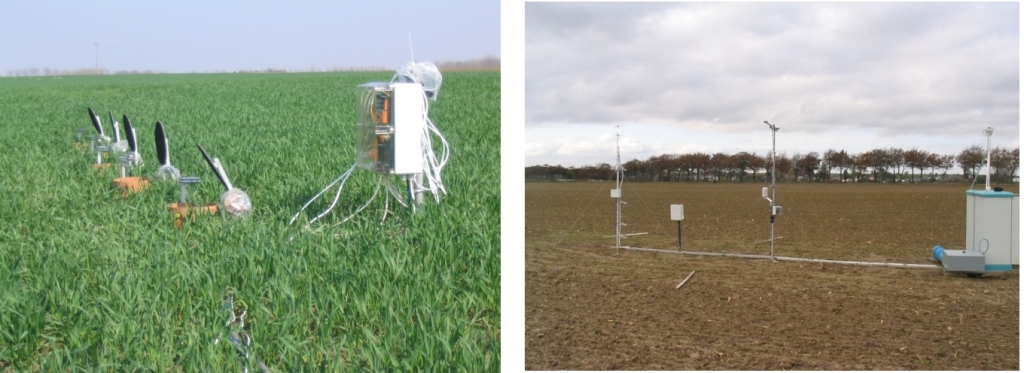Lonzée Terrestrial observatory
Installed in 2004 thanks to funds from European Community and Communauté française de Belgique (ARC project), the Lonzée terrestrial observatory was one of the first European site devoted to production crops. This set-up allowed us to follow net CO2 fluxes exchanged between a four year rotation crop.
The system measures turbulent fluxes with the eddy covariance method as well as meteorological parameters. A first output of the system was the estimate of annual net ecosystem exchange by crops, their response to climate, species and to crop management activities (Moureaux et al., 2006, 2008).
Several ancillary measurements were also performed at the site, in collaboration with the Unit of Crop science, and this allowed, for the first time, an establishment of the carbon budget of a four year European crop rotation (Aubinet et al., 2009).
During the last years, continuous flux measurements were completed with detailed biomass measurements, soil flux measurements (Suleau et al, 2011) (with partitioning between autotrophic and heterotrophic components), soil carbon inventory (Max Planck Institute for Biogeochemistry, Jena), NDVI (Collaboration with Orsay University), monthly evolution of nitrogen deposition (Nitroeurope).
In collaboration with other european teams (CESBIO – Toulouse, Max Planck Institute – Jena, Universités de Zürich, Dublin, Aberdeen et Wageningen) these measurements were integrated at the European scale in order to evaluate the carbon balance of European crops (Kutsch et al., 2010 ; Ceschia et al., 2010 ; Eugster et al., 2010) and to establish a first assesment of European terrestrial carbon balance.
The site is planned to integer the European ICOS network in 2012. It is also planned to be a part of the Environmentislife project in development at GxABT.

